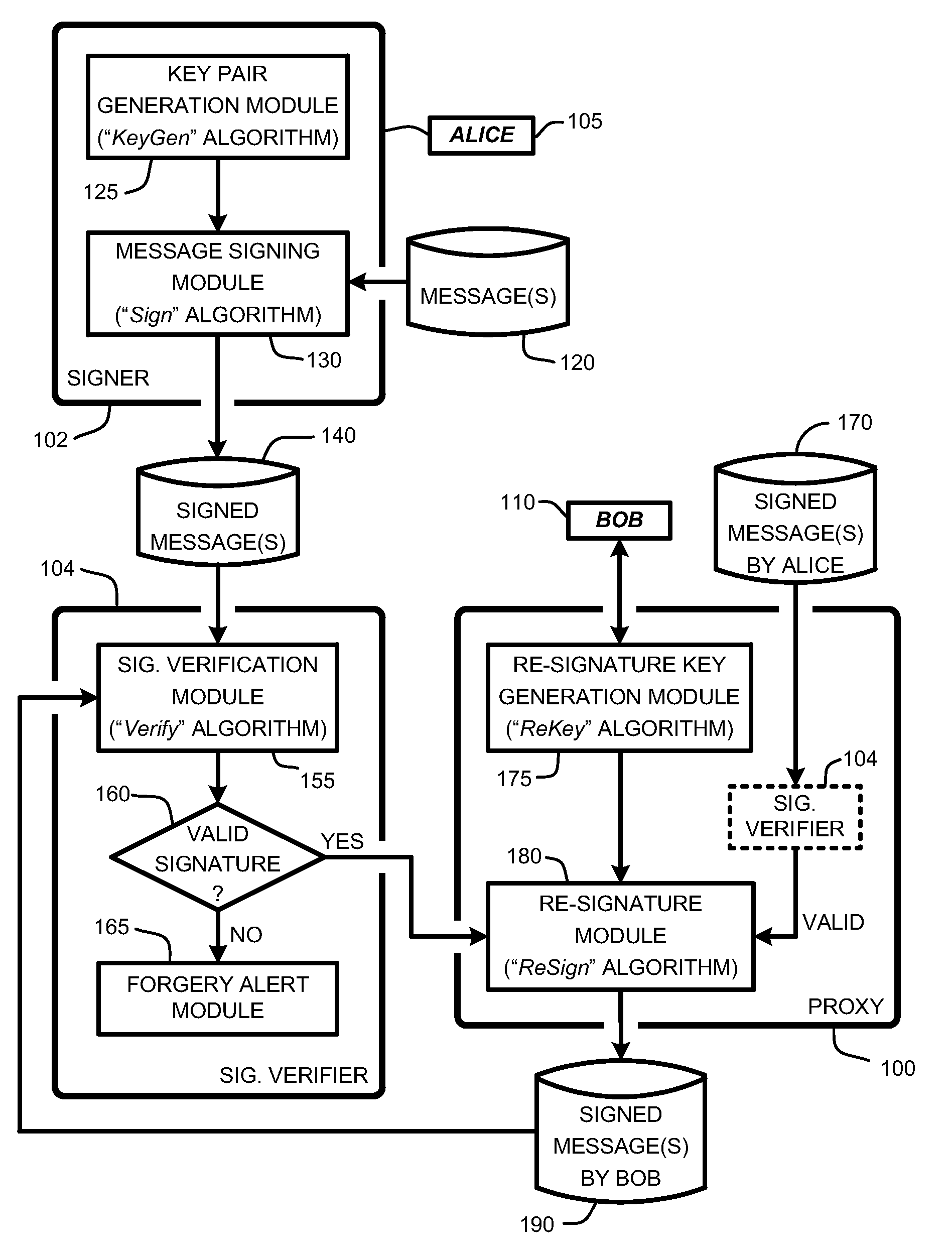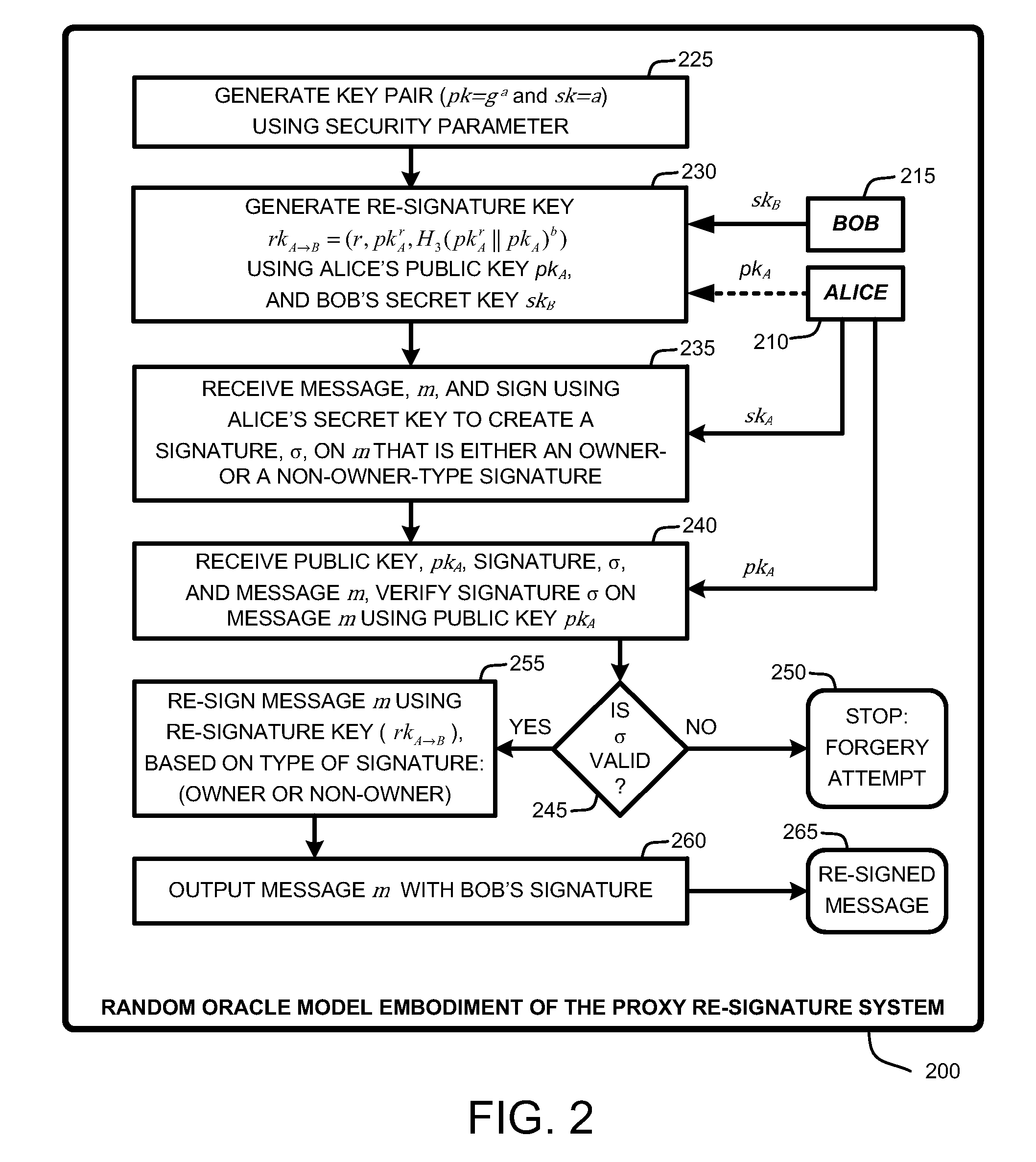Unidirectional multi-use proxy re-signature process
a multi-use, proxy technology, applied in the direction of user identity/authority verification, digital transmission, encryption apparatus with shift register/memory, etc., can solve the problems of limiting the utility of various applications, inefficient original proxy re-signature scheme, and unsuitable for many practical applications
- Summary
- Abstract
- Description
- Claims
- Application Information
AI Technical Summary
Benefits of technology
Problems solved by technology
Method used
Image
Examples
Embodiment Construction
[0034]In the following description of the embodiments of the claimed subject matter, reference is made to the accompanying drawings, which form a part hereof, and in which is shown by way of illustration specific embodiments in which the claimed subject matter may be practiced. It should be understood that other embodiments may be utilized and structural changes may be made without departing from the scope of the presently claimed subject matter.
1.0 Introduction
[0035]The first known proxy re-signature scheme in was introduced 1998, and was a bidirectional, multi-use, and public proxy scheme. The definition for security in proxy re-signature schemes was first formalized in a well known publication in 2005 entitled “Proxy re-signatures: new definitions, algorithms, and applications,” by G. Ateniese, S. and Hohenberger, in Proceedings of the 12th ACM Conference on Computer and Communications Security (Alexandria, Va., Nov. 7-11, 2005), ACM CCS 2005, pages 310-319.
[0036]In general, Aten...
PUM
 Login to View More
Login to View More Abstract
Description
Claims
Application Information
 Login to View More
Login to View More - R&D
- Intellectual Property
- Life Sciences
- Materials
- Tech Scout
- Unparalleled Data Quality
- Higher Quality Content
- 60% Fewer Hallucinations
Browse by: Latest US Patents, China's latest patents, Technical Efficacy Thesaurus, Application Domain, Technology Topic, Popular Technical Reports.
© 2025 PatSnap. All rights reserved.Legal|Privacy policy|Modern Slavery Act Transparency Statement|Sitemap|About US| Contact US: help@patsnap.com



